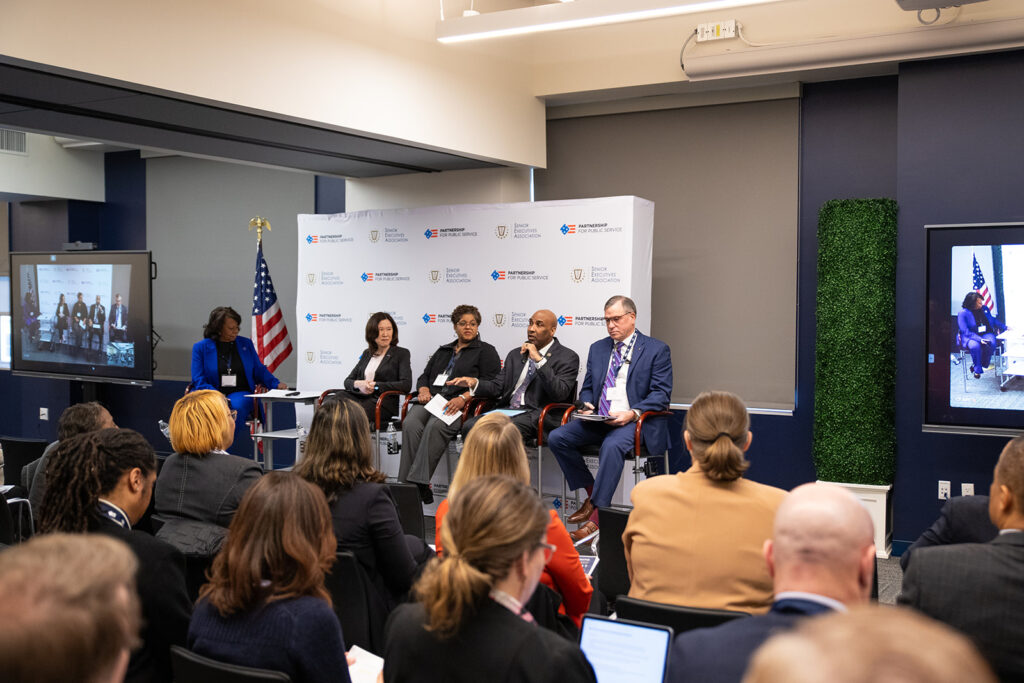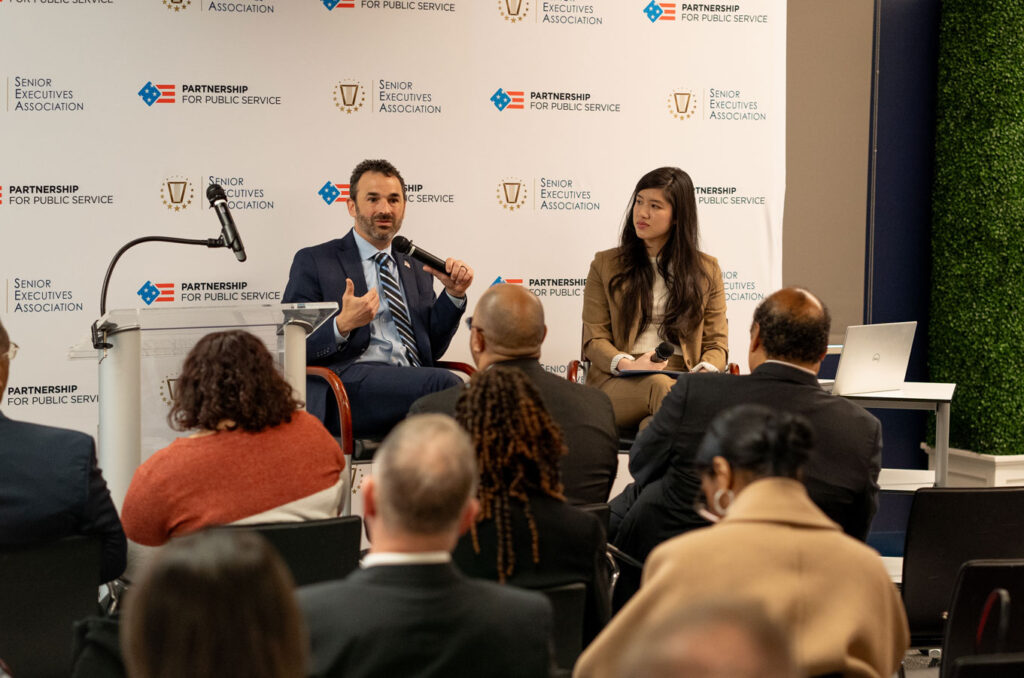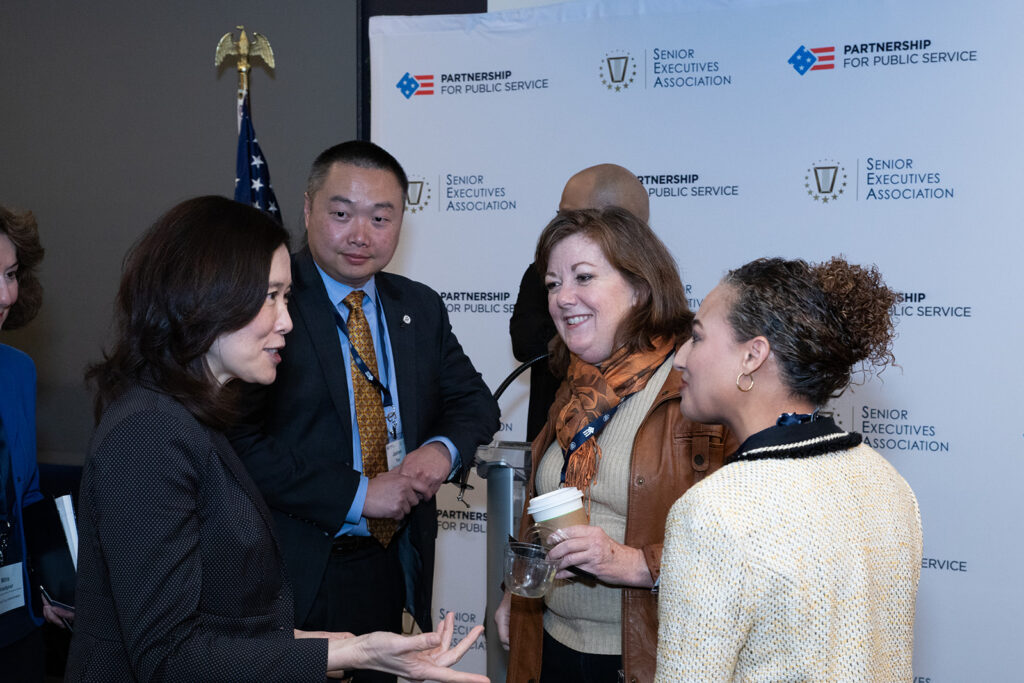How federal executives can break boundaries to lead effectively
Humans naturally divide and group things to make their lives easier. Between agencies, sectors, professions, generations, administrations and more, boundaries abound in the federal government.
But today’s biggest issues, whether artificial intelligence, public health or geopolitics, ignore these lines. To be successful, leaders both within and outside government must lead beyond them.
Almost 400 such leaders gathered last week at the 2024 Senior Executive Leadership Summit, co-hosted by the Senior Executives Association and the Partnership for Public Service. Below are highlights of what the attendees learned.
Day one – Exploring boundaries: Build a pipeline and see the system
The best leaders bring out the best in others. As keynote speaker Tanya Bradsher, deputy secretary of the Department of Veterans Affairs, shared, “We all stand on the shoulders of those who came before us. Those people who helped us understand, and overcome, the boundaries that hem us in.”
Having received support from others, today’s leaders have a responsibility to do the same for the next generation.
In a panel on building a more diverse Senior Executive Service that reflects the federal workforce, leaders from NASA, the National Science Foundation and the Army encouraged current leaders to intentionally invest in potential leaders with different backgrounds and experiences. This pipeline needs to be laid years in advance rather than prioritized only when an SES vacancy opens.
It is also critical for leaders to understand the complex systems in which they lead and develop others. Participants explored various boundaries in afternoon breakout sessions– from working across generations and political-career lines to building trust with employees of different backgrounds.

Day two – Reimagining boundaries: Broaden your view and challenge convention
For senior executives, the most valuable opportunities grant an enterprisewide perspective.
Panelist Bruce Hollywood, chief operating officer of the U.S. Space Force, said that after working in a program with leaders from across government, “I looked at everything differently. My enterprise view was a broadened view, not just the enterprise of defense.” His fellow panelists, all SES leaders who have held high-level roles in different agencies, shared that you don’t necessarily have to change jobs to gain this perspective—taking a detail or joining a cross-agency development program both fit the bill.
It is not just where you work, but how. “Always be open to this idea that you are on a learning curve,” said Danny Werfel, commissioner of the IRS. “[Create] an environment where people feel comfortable saying, ‘Have you thought about it differently, boss?’”
In breakouts, attendees dug into what reimagining boundaries could mean in practice, including applying agile principles, creating space for innovation, using storytelling to engage others, supporting employees to deliver for customers, networking strategically and developing the skills to harness generative AI.

Day three – Lead beyond boundaries: Practice foresight and expand the possible
Leaders must understand how emerging trends will impact their work—whether in tech, the workforce or society.
One method is to use strategic foresight as a practice to lead beyond one of the most intimidating boundaries—time. As Eric Popiel, the Future of Work group manager at the Office of Personnel Management described, “Foresight is about envisioning different possibilities and plausible futures and identifying … strategies so that your organization can thrive, regardless of how the future turns out.”
A final boundary to transcend is one’s personal mindset—what each of us believes is possible for ourselves as leaders and the work we do.
Our final keynote speaker, Indra Nooyi, former CEO of PepsiCo, emphasized the “right mindset of leadership” as one of collaboration and common purpose. A final panel of innovators working within and outside the federal space agreed that mindset is the cornerstone to expanding what is possible for government to accomplish in the digital age.

Explore the 2024 Senior Executive Leadership Summit agenda and our Public Service Leadership Institute’s training opportunities.
